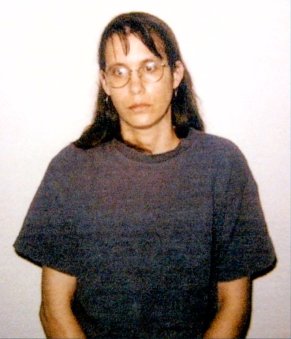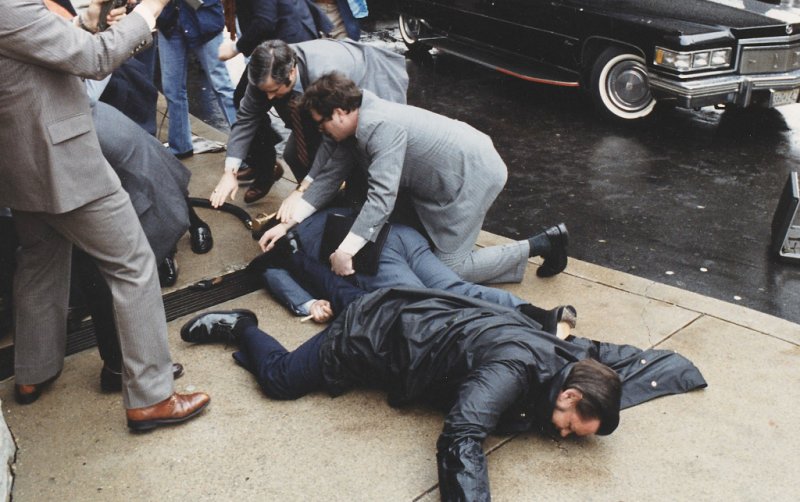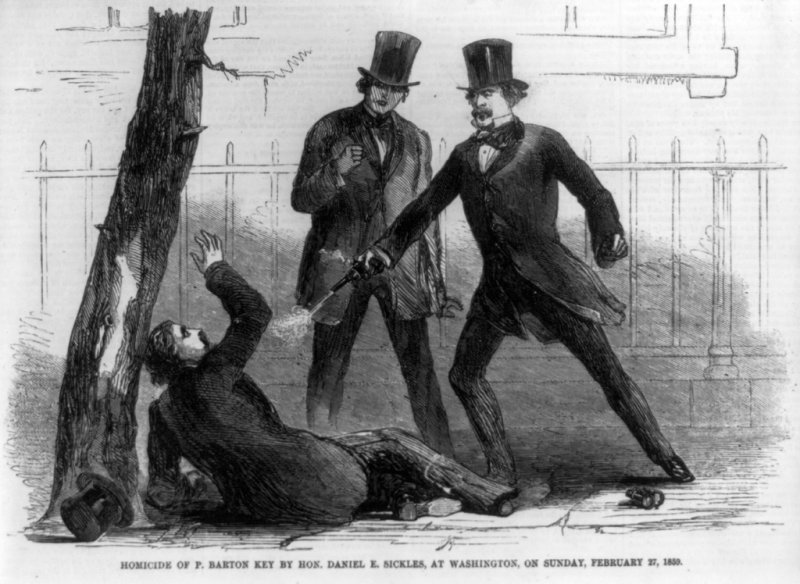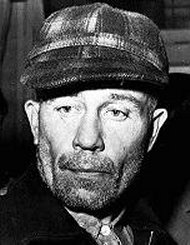Famous Insanity Defense Cases: 7 Notable Instances Analyzed

The legal landscape has been witness to numerous high-profile criminal cases where the defense of insanity played a pivotal role in determining the outcome. This defense, steeped in controversy and subject to ongoing debate, posits that the accused, due to an impaired mental state at the time of the crime, should not be held fully responsible for their actions. In this article, we will explore seven notable cases where the insanity defense was successfully invoked, offering a detailed analysis of each case, the psychological underpinnings, and the broader implications on legal and medical discourse surrounding mental health and criminal liability.
Understanding the Insanity Defense:
The Insanity Defense is a legal concept that asserts that a defendant was unable to appreciate the wrongfulness of their actions due to a severe mental disorder at the time of the crime. This defense does not deny the commission of the act but contends that the defendant, due to their impaired mental state, should not be held criminally responsible.
Legal Standards:
Different jurisdictions employ various legal standards to assess insanity, including the M'Naghten Rule, the Irresistible Impulse Test, the Durham Rule, and the Model Penal Code. The M'Naghten Rule, for instance, focuses on whether the defendant was able to understand the nature of their act or distinguish between right and wrong. The Model Penal Code combines elements of cognition and volition, assessing whether the defendant lacked substantial capacity to appreciate the criminality of their conduct or conform their conduct to the requirements of the law.
Procedures and Outcomes:
When a defendant pleads not guilty by reason of insanity, they undergo psychological evaluations to determine their mental state at the time of the offense. If found not guilty by reason of insanity, the defendant is typically committed to a mental health facility for treatment rather than serving time in prison. The duration of commitment varies and is subject to periodic reviews to assess the individual’s mental health and potential risk to society.
Public Perception and Debate:
The Insanity Defense often sparks public debate and controversy, primarily due to perceptions of its potential misuse and the balance between individual rights and public safety. The discourse surrounding this defense explores the ethical, legal, and medical considerations inherent in determining criminal responsibility and addresses the broader societal implications of acknowledging and addressing mental health within the criminal justice system.
7 Famous Insanity Defense Cases
1. Andrea Yates (2001):

In a case that shocked the nation and brought the issues of postpartum depression and psychosis to the forefront, Andrea Yates drowned her five children in a bathtub in 2001. Yates was suffering from severe postpartum depression and psychosis, believing she was saving her children from eternal damnation. Initially convicted of capital murder, Yates's conviction was overturned in 2006, and she was found not guilty by reason of insanity in a retrial.
Analysis:
The Andrea Yates case underscored the profound impact severe mental health conditions can have on an individual's perceptions and actions. It highlighted the necessity of recognizing and addressing postpartum conditions promptly and effectively. The case also sparked a nationwide conversation about the intersection of mental health and criminal justice, emphasizing the need for a more nuanced and empathetic approach in dealing with individuals suffering from severe mental health disorders within the legal system. The retrial and subsequent verdict marked a significant moment in the legal recognition of mental health conditions and their role in influencing behavior, reflecting evolving societal understanding and attitudes towards mental health.
2. John Hinckley Jr. (1982):

John Hinckley Jr.'s attempted assassination of President Ronald Reagan in 1982 was a defining moment in the history of the insanity defense. Driven by an obsessive desire to impress actress Jodie Foster, Hinckley fired six shots at Reagan, injuring him and three others. The trial that followed focused extensively on Hinckley's mental state, with the defense and prosecution presenting conflicting psychiatric evaluations. Ultimately, Hinckley was found not guilty by reason of insanity, leading to widespread public outcry and significant reforms in insanity defense laws.
Analysis:
The case of John Hinckley Jr. brought to light the complexities involved in assessing legal insanity and the pivotal role of psychiatric evaluations in such determinations. The conflicting interpretations of Hinckley's mental state during the trial underscored the inherent challenges in objectively assessing an individual's mental condition and its influence on their actions. The public's reaction to the verdict and the subsequent legislative changes highlighted the tension between societal perceptions of justice and the legal and ethical considerations surrounding criminal responsibility in the context of mental illness. Hinckley's acquittal spurred a reevaluation of the criteria for the insanity defense, reflecting broader societal and legal concerns regarding the balance between individual rights and public safety.
3. Lorena Bobbitt (1993):
Lorena Bobbitt became a household name in 1993 when she severed her then-husband's penis after enduring years of alleged abuse. The case brought significant attention to the issues of domestic abuse and marital rape, shedding light on the psychological toll sustained abuse can have on victims. Lorena's defense team argued that she was in a state of temporary insanity, induced by the trauma she experienced, at the time of the incident. The jury, after deliberating, found her not guilty by reason of temporary insanity, leading to a 45-day evaluation period in a mental hospital.
Analysis:
Lorena Bobbitt's case opened up a critical dialogue about the psychological impact of domestic abuse and the legal system's handling of such cases. It raised pertinent questions about the extent to which ongoing abuse and trauma can be considered contributing factors in assessing criminal liability in retaliatory actions. The psychological ramifications of abuse, including the nuanced distinctions between different forms of sexual violence, are complex and multifaceted. For a deeper understanding of the distinctions in sexual offenses, consider exploring our article on the differences between molest and assault.
4. Daniel Sickles (1859):

Daniel Sickles, a prominent U.S. Congressman in the 19th century, laid the groundwork for the temporary insanity defense when he was acquitted for the murder of Philip Barton Key II. Sickles shot and killed Key after discovering his affair with Sickles' wife, Teresa. The defense argued that Sickles was driven to a state of temporary insanity by the revelation of his wife's infidelity. The jury, influenced by the societal norms and moral values of the time, acquitted Sickles, allowing him to resume his political career.
Analysis:
The acquittal of Daniel Sickles set a precedent in the American legal system, introducing the concept of temporary insanity as a viable defense. This case illustrated how societal norms and moral values can significantly influence legal judgments and interpretations of insanity. It raised critical questions about the objectivity and impartiality of legal assessments of insanity and the potential for such defenses to reflect prevailing societal attitudes and biases. The case of Daniel Sickles highlighted the dynamic interplay between morality, society, and law, prompting reflections on the ethical implications of legal judgments and the evolving nature of societal values and their impact on legal outcomes.
5. Steven Steinberg (1981):
Steven Steinberg's case in 1981 brought forth discussions on sleep disorders and their implications in legal scenarios. Accused of stabbing his wife, Elena, 26 times, Steinberg claimed to have committed the act while sleepwalking, rendering him temporarily insane. The defense did not dispute the act but argued that Steinberg was not conscious and, therefore, not responsible for his actions. The jury, after deliberation, found him not guilty by reason of temporary insanity, leading to significant changes in Arizona law, including the introduction of "guilty but insane" verdicts.
Analysis:
The case of Steven Steinberg highlighted the challenges and considerations involved in substantiating claims of temporary insanity due to unconventional reasons such as sleep disorders. It underscored the importance of meticulous examination and expert testimonies in establishing the validity of such defenses. The legal amendments following the verdict exemplify the evolving nature of legal frameworks in response to unique and unprecedented cases. The introduction of "guilty but insane" verdicts in Arizona reflects the ongoing efforts to strike a balance between acknowledging mental conditions and ensuring accountability and justice. Steinberg's case serves as a reference point for discussions on the incorporation of medical and psychological advancements in legal assessments of insanity.
6. Ed Gein (1957):

Ed Gein's horrifying crimes in the late 1950s left an indelible mark on American criminal history. Gein confessed to the murders of two women and was suspected of several others. His gruesome acts, which included grave robbing and creating trophies from human body parts, inspired some of the most iconic characters in horror film history. Gein's defense argued that his severe mental disorders and disturbed psyche rendered him criminally insane. The court, after evaluation, concurred with the defense, declaring Gein criminally insane.
Analysis:
Ed Gein's case provided a disturbing insight into the mind of a serial killer, exploring the intricate relationship between severe mental disorders and heinous criminal acts. It emphasized the necessity for a multidimensional approach in understanding and addressing extreme manifestations of mental disorders in criminal scenarios. The case prompted reflections on the adequacy and adaptability of legal frameworks in dealing with complex psychological conditions and their correlation with violent criminal behavior. Gein's influence on popular culture underscores the enduring fascination and horror associated with extreme criminal acts and the minds behind them, reflecting societal perceptions and interpretations of criminal insanity.
7. Bruco Eastwood (2010):
Bruco Eastwood’s case in 2010 brought attention to the implications of severe mental illnesses such as schizophrenia in legal contexts. Eastwood opened fire on students at Deer Creek Middle School, injuring two. The defense argued that Eastwood, diagnosed as a schizophrenic, was driven by delusions and auditory hallucinations, which dictated his actions at the time of the incident. The jury, after considering expert testimonies and evaluations, found him not guilty by reason of insanity.
Analysis:
The verdict in Bruco Eastwood’s case emphasized the complexities and considerations involved in evaluating the influence of severe mental health conditions on individual actions. It highlighted the role of comprehensive mental health evaluations and expert testimonies in distinguishing between deliberate criminal acts and those driven by severe mental health conditions. The case underscored the need for ongoing discourse and refinement in legal approaches to insanity defenses, advocating for a more nuanced understanding of the interplay between mental health and criminal liability. It also brought forth discussions on the adequacy of support systems and interventions for individuals with severe mental illnesses, reflecting on the broader societal and systemic aspects of mental health and criminal behavior.
Conclusion:
The exploration of these notable cases provides a multifaceted perspective on the insanity defense and its implications in the legal, medical, and societal domains. Each case, unique in its circumstances and outcomes, contributes to the ongoing dialogue on the relationship between mental health and criminal responsibility. According to attorneys who write for us on law, the insanity defense, while controversial, serves as a lens through which the complexities of human behavior, morality, and justice are examined and understood.
The cases discussed illustrate the diverse and intricate nature of insanity pleas, reflecting the evolving attitudes and understandings of mental health within the legal system and society at large. They underscore the importance of continuous learning, empathy, and adaptation in addressing the challenges and ethical considerations inherent in the intersection of mental health and criminal law. The interplay between legal frameworks, medical insights, societal norms, and individual experiences continues to shape the discourse on insanity defenses, necessitating a balanced and informed approach to ensure fairness, compassion, and justice in the pursuit of truth.
More to Read:
Previous Posts:







